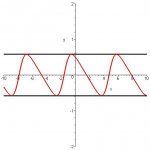Hi,
here's the question im trying to answer:
Find the points on the curve y= (cos x)/(2 + sin x) at which the tangent is horizontal.
I've found the derivative, which is -(sin^2 x + 2sin x + cos^2 x)/(sin^2 x + 4sin x + 4) but what do I do from there? Answers to similar questions in the back of the book are expressed with pi and I have no idea how to get pi from an expression like that.
Thanks a lot!
here's the question im trying to answer:
Find the points on the curve y= (cos x)/(2 + sin x) at which the tangent is horizontal.
I've found the derivative, which is -(sin^2 x + 2sin x + cos^2 x)/(sin^2 x + 4sin x + 4) but what do I do from there? Answers to similar questions in the back of the book are expressed with pi and I have no idea how to get pi from an expression like that.
Thanks a lot!

